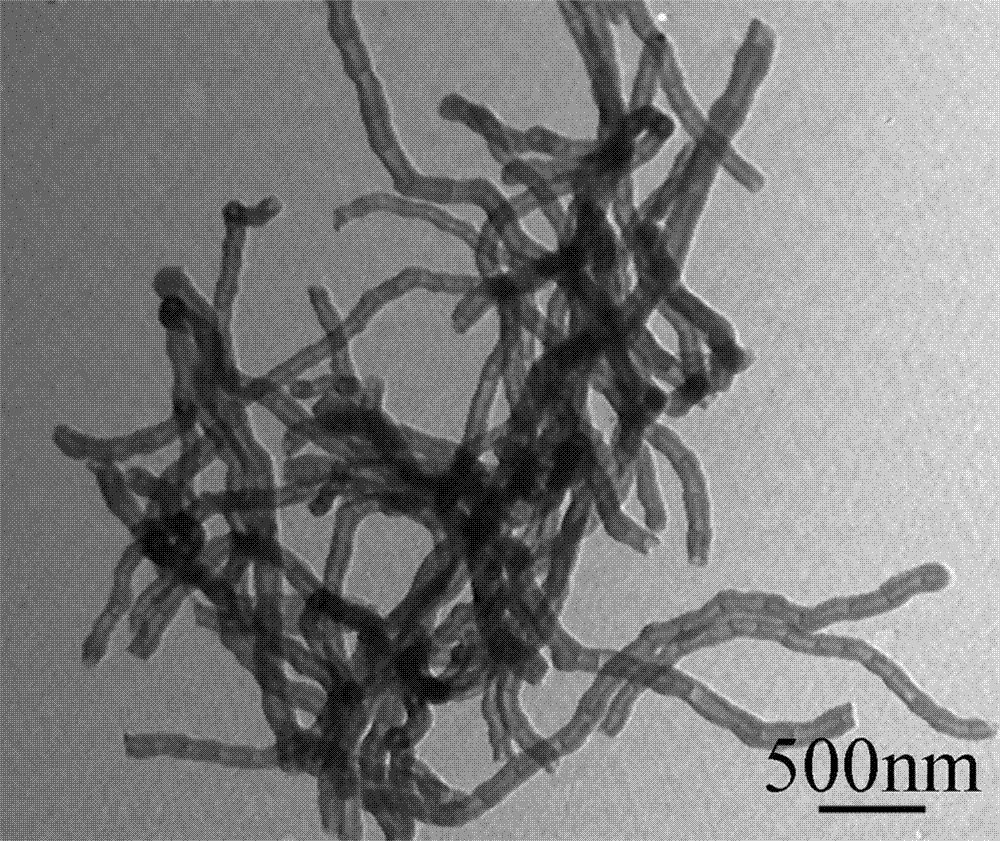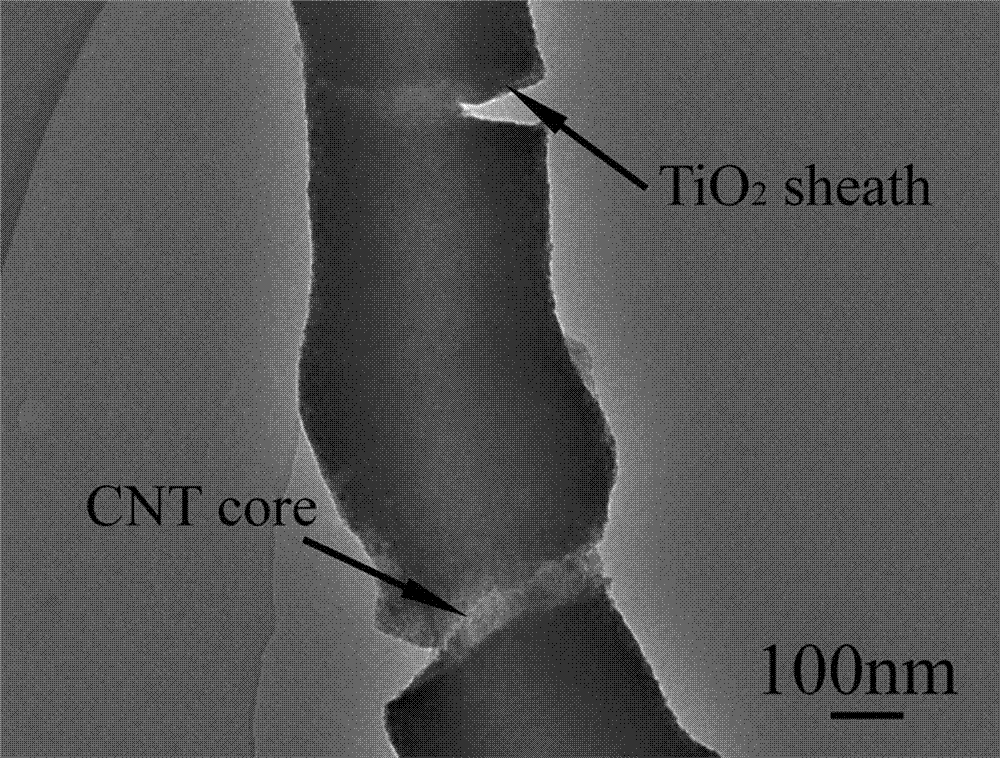Preparation method and application of carbon nanotube/titanium dioxide coaxial nanometer cable composite material
A technology of titanium dioxide and carbon nanotubes, applied in circuits, electrical components, battery electrodes, etc., can solve problems such as low ion diffusion coefficient, hindering application, and low conductivity
- Summary
- Abstract
- Description
- Claims
- Application Information
AI Technical Summary
Problems solved by technology
Method used
Image
Examples
Embodiment 1
[0019] The present invention will be described in further detail below in conjunction with specific embodiments.
[0020] 1. Preparation of polydivinylbenzene: Put 100 g of n-heptane in a 250 mL single-necked flask, add 4 g of monomer divinylbenzene to form a solution, and then add 150 mg (10 drops) of trifluoro Boronium diethyl ether complex was used as an initiator. After sealing, a large amount of reddish-brown precipitate was obtained by ultrasonication in an ultrasonic wave. After 15 minutes, ethanol was added to terminate the reaction, and a white cotton mass was obtained by filtration.
[0021] 2. Preparation of sulfonated polydivinylbenzene: Weigh 0.2 g of dry polymer nanotubes into a flask, add 30 mL of concentrated sulfuric acid, place in a constant temperature environment of 50°C for sulfonation for 12 h, dilute with a large amount of water, filter, Dry to obtain the product. figure 1 It is a TEM photo of sulfonated polydivinylbenzene, which is a bamboo-shaped nano...
PUM
| Property | Measurement | Unit |
|---|---|---|
| Diameter | aaaaa | aaaaa |
Abstract
Description
Claims
Application Information
 Login to View More
Login to View More - R&D
- Intellectual Property
- Life Sciences
- Materials
- Tech Scout
- Unparalleled Data Quality
- Higher Quality Content
- 60% Fewer Hallucinations
Browse by: Latest US Patents, China's latest patents, Technical Efficacy Thesaurus, Application Domain, Technology Topic, Popular Technical Reports.
© 2025 PatSnap. All rights reserved.Legal|Privacy policy|Modern Slavery Act Transparency Statement|Sitemap|About US| Contact US: help@patsnap.com



